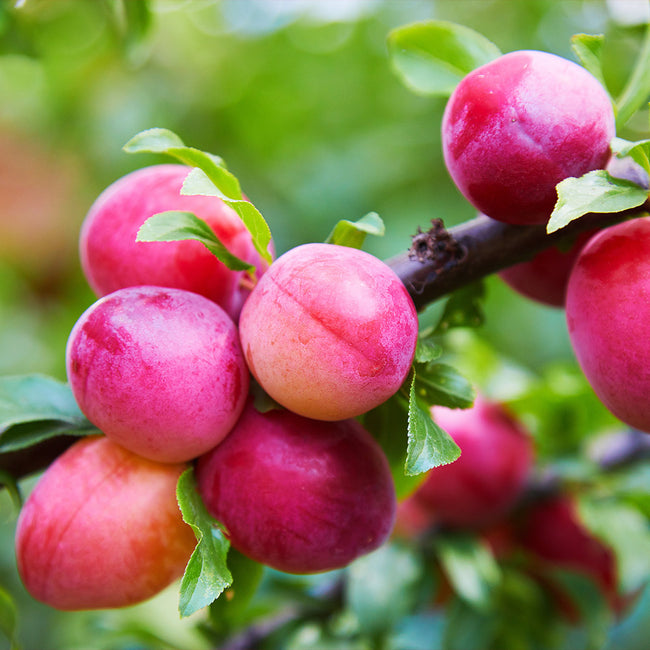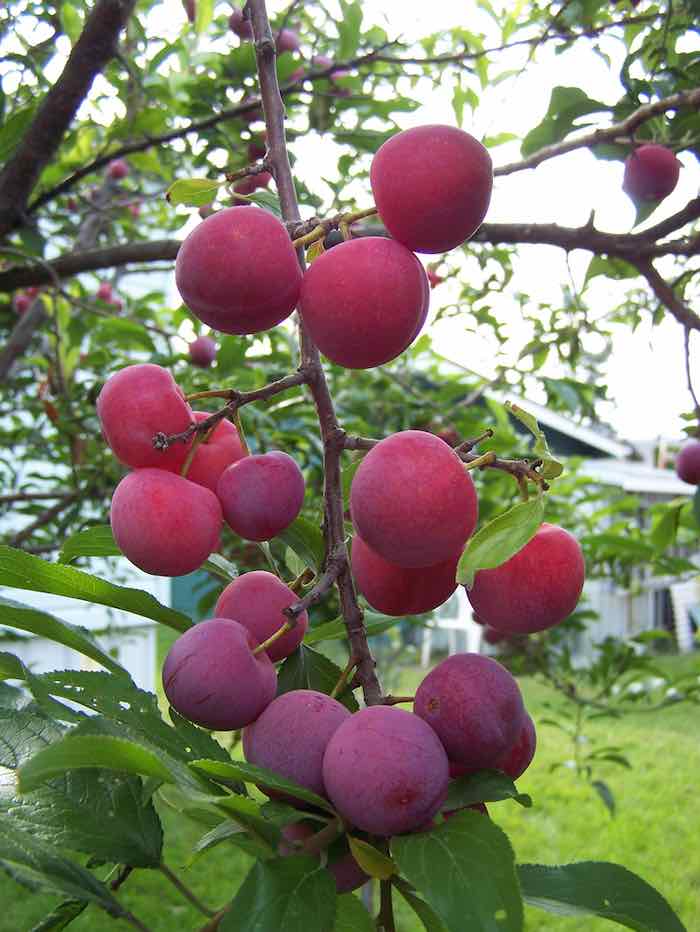
Japanese plums also tend to ripen a bit earlier, from June to August, whereas European varieties tend to ripen from July to September. Scionwood for grafting is also available for many of the varieties listed. Plant a plum tree in your yard so you can grow your own fresh, delicious plums. The two species do not cross-pollinate - in part because Japanese plums tend to bloom much ealier than European ones. Theres nothing like eating a fresh plum right off the tree Check out our wide selection of plum trees including Japanese plums, European plums, Pluot hybrids and Flowering and Ume tree types. We offer both 'European' plum trees from the species Prunus domestica - and Japanese plums from the species Prunus salicina. Touch device users, explore by touch or with swipe gestures. When autocomplete results are available use up and down arrows to review and enter to select. As of 2008, there were less than 100 of these trees left. Get the best pollinator plum you can buy - the Toka Plum Trees are essential for those who love robust growth without hassle. It yields bitter, reddish purple plums about an inch long. It has a gnarled trunk with zig-zagging branches with thorns at their tips. Indeed in our opinion freshly-picked dessert plums can offer the most exquisite sweet flavours of any fruit available from the temperate garden. The endangered scrub plum ( Prunus geniculate) is native to areas of central Florida within USDA zones 9a and 9b. Most important of all, the flavour of ripe home-grown plums is vastly superior to shop-bought fruit.

Although plum trees do suffer from a range of diseases, they seem to catch them less often than other fruit varieties. Plums are also more nutrient-rich than apples or pears, and comparable to some other "superfoods" such as blueberries.

For plum varieties that are not self-fertile, another plum tree of a different variety flowering at the same time is usually all that is necessary to ensure good pollination and heavy crops - there are few of the pollination incompatibilities found with apples, pears and cherries. Unlike most apples and pears, many plum varietes are self-fertile or partially self-fertile and do not need a pollination partner. Flowers are produced differently by each of these cultivars depending on where you live, so you’ll have beautiful flowers for weeks. They thrive in most conditions, but they prefer water-retentive soils, and mulching is therefore particularly important for plum trees - farmyard manure is ideal. The blossoms of the 4-in-1 Plum tree burst into vibrant color in the spring, accompanied by a lush backdrop of green foliage. The only horticultural challenge is that plums flower quite early in spring, so locations that are prone to frosts are best avoided (or choose a late-flowering or frost-resistant variety). Plum trees are easy to grow - usually easier than apples and pears - and require very little training or pruning.

If you are new to growing fruit trees, plum trees make an excellent choice. A very late ripening prune-style plum, and one of the largest-fruited of all plums.


 0 kommentar(er)
0 kommentar(er)
